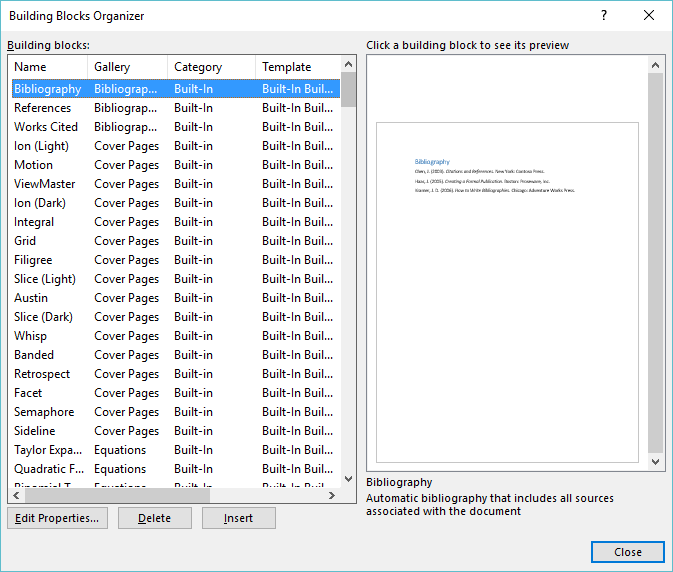Please Note: This article is written for users of the following Microsoft Word versions: 2007, 2010, 2013, 2016, 2019, and 2021. If you are using an earlier version (Word 2003 or earlier), this tip may not work for you. For a version of this tip written specifically for earlier versions of Word, click here: Deleting an AutoText Entry.
Written by Allen Wyatt (last updated December 31, 2024)
This tip applies to Word 2007, 2010, 2013, 2016, 2019, and 2021
AutoText has long been a powerful tool in Word. There are several reasons why you would want to remove an AutoText entry you previously created. The biggest reason is that you just don't need the entry any more. For instance, you may have defined a group of AutoText entries for a particular job you were doing. When the job is over, it is best to remove the AutoText entries.
You can remove AutoText entries by using the Building Block Organizer. (AutoText entries are considered one of several "building blocks" that can be created in Word.) To remove AutoText entries, follow these steps:

Figure 1. The Building Blocks Organizer.
WordTips is your source for cost-effective Microsoft Word training. (Microsoft Word is the most popular word processing software in the world.) This tip (8716) applies to Microsoft Word 2007, 2010, 2013, 2016, 2019, and 2021. You can find a version of this tip for the older menu interface of Word here: Deleting an AutoText Entry.

Create Custom Apps with VBA! Discover how to extend the capabilities of Office 365 applications with VBA programming. Written in clear terms and understandable language, the book includes systematic tutorials and contains both intermediate and advanced content for experienced VB developers. Designed to be comprehensive, the book addresses not just one Office application, but the entire Office suite. Check out Mastering VBA for Microsoft Office 365 today!
Building blocks can be a great asset when putting together documents, as they make inserting standardized information ...
Discover MoreBuilding Blocks are a great way to semi-automate the creation of common documents. At some point you may want to get a ...
Discover MoreBuilding blocks are a great tool for inserting standard information in your documents. It is also possible, however, to ...
Discover MoreFREE SERVICE: Get tips like this every week in WordTips, a free productivity newsletter. Enter your address and click "Subscribe."
There are currently no comments for this tip. (Be the first to leave your comment—just use the simple form above!)
Got a version of Word that uses the ribbon interface (Word 2007 or later)? This site is for you! If you use an earlier version of Word, visit our WordTips site focusing on the menu interface.
Visit the WordTips channel on YouTube
FREE SERVICE: Get tips like this every week in WordTips, a free productivity newsletter. Enter your address and click "Subscribe."
Copyright © 2025 Sharon Parq Associates, Inc.
Comments